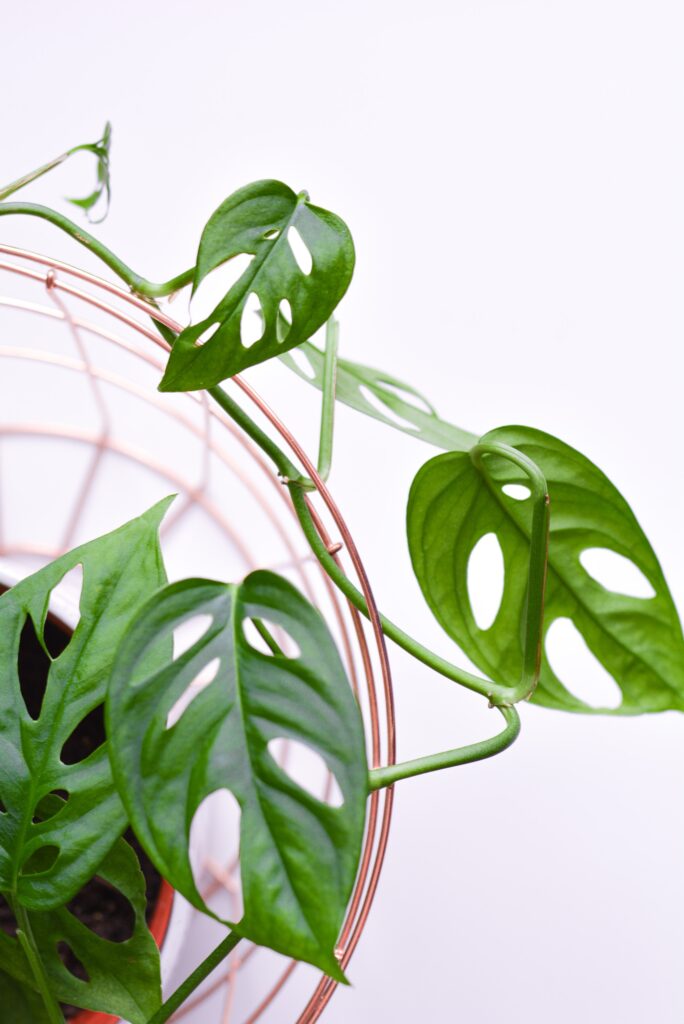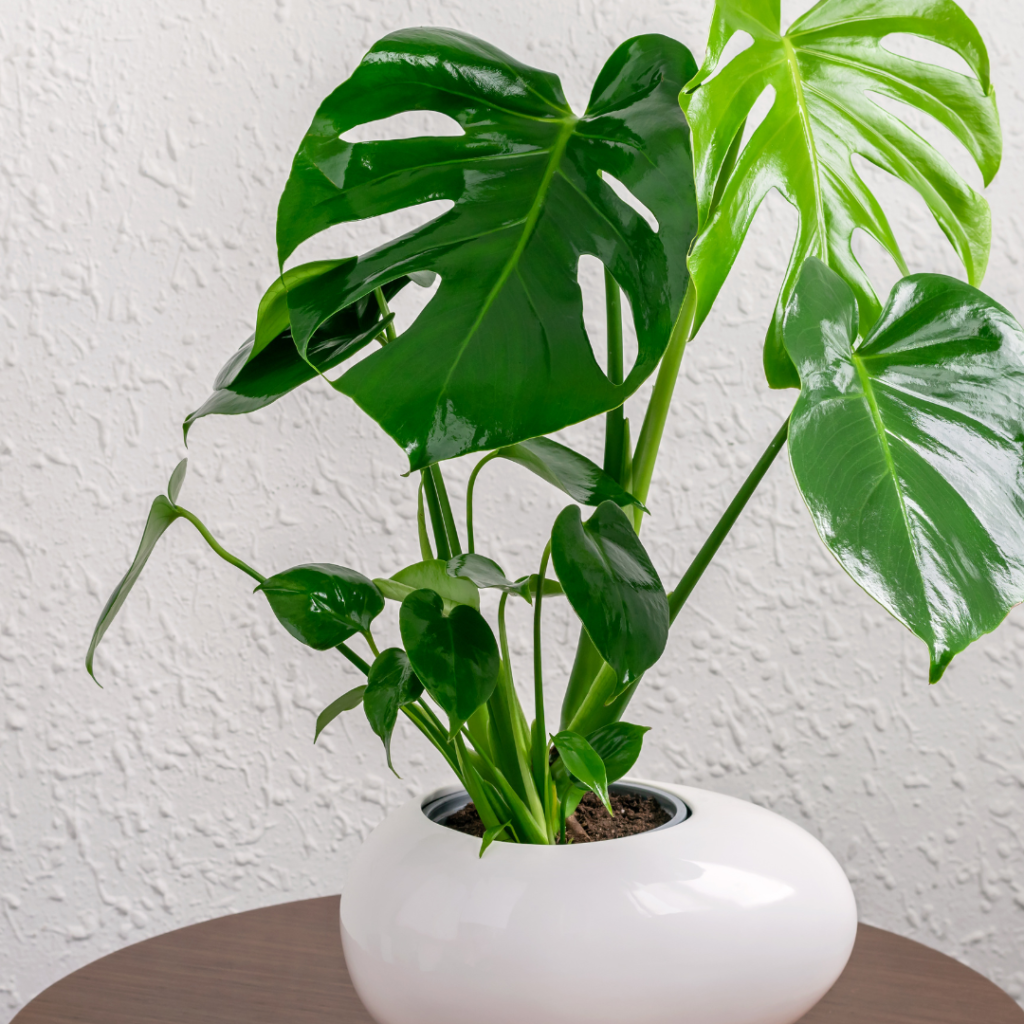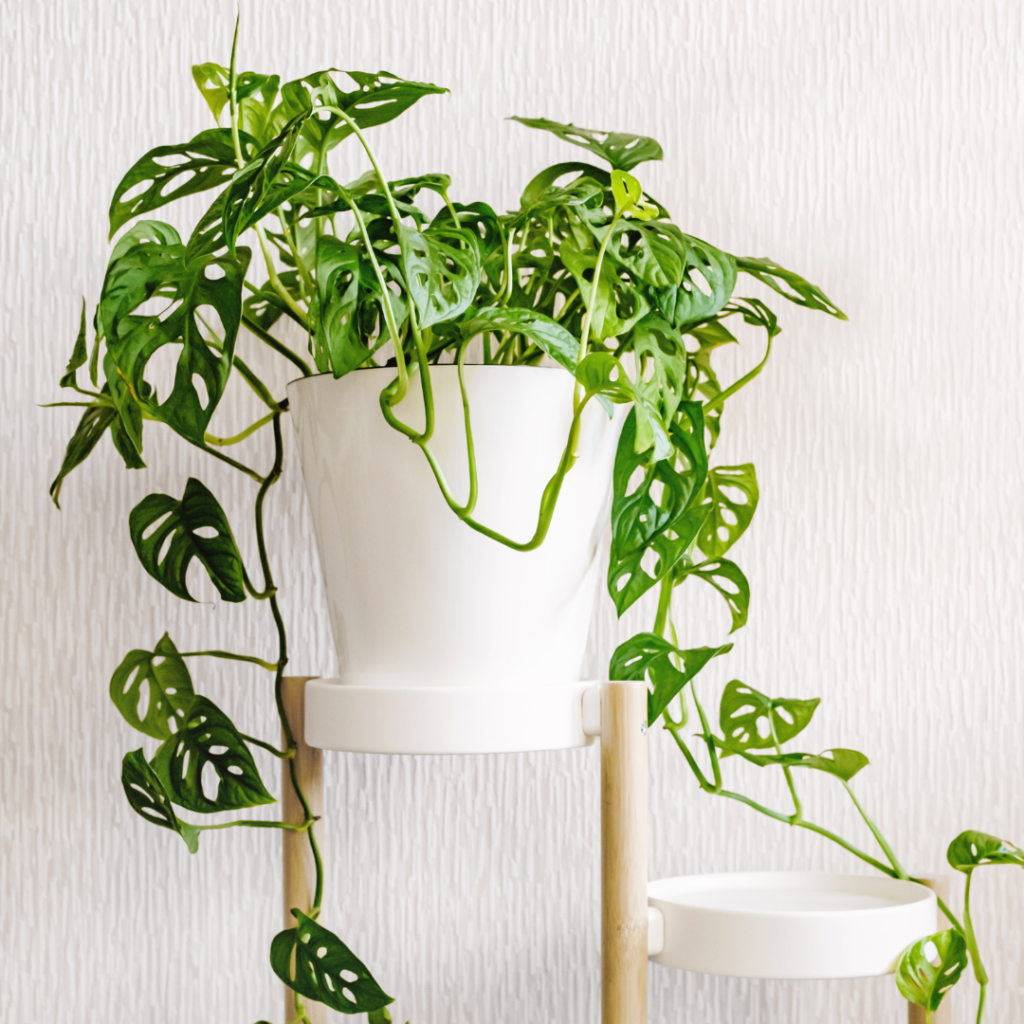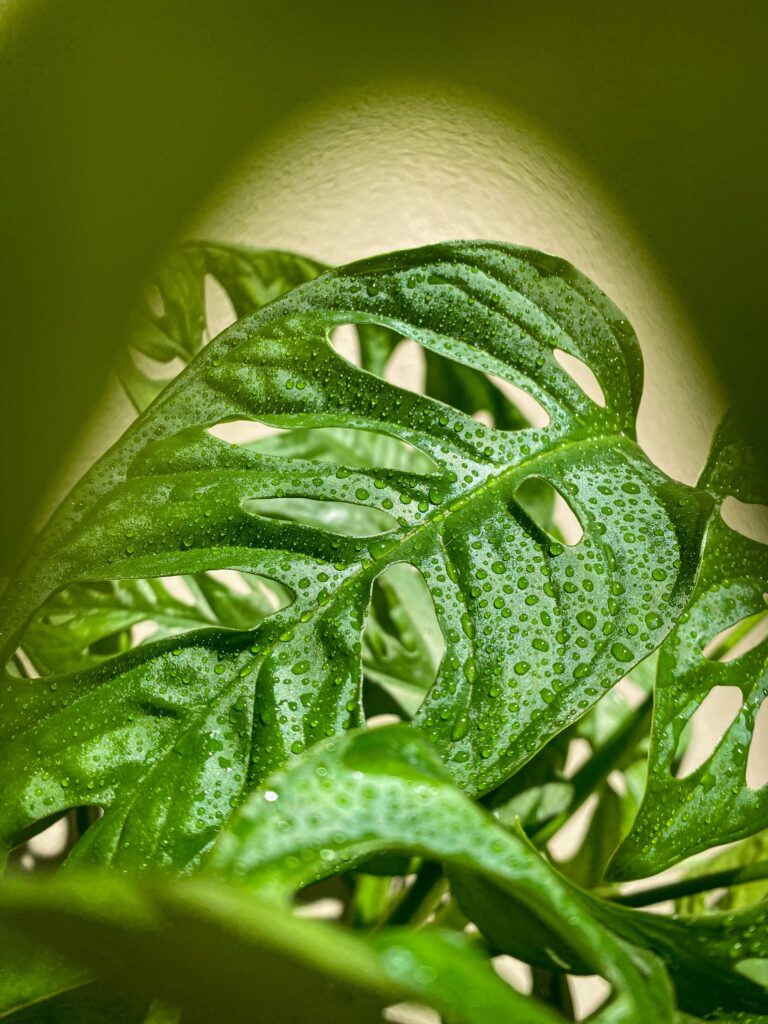If you’re looking for something unique to add to your home, look no further than Monstera Adansonii or the Swiss cheese vine.
This beautiful plant grows up to 10 feet tall and has unique foliage with holes scattered throughout its leaves.
It’s perfect for houseplant parents who are looking to add a bit of quirkiness to their collection.
Monstera Adansonii is a gorgeous houseplant with unique foliage and a vining growth habit. With holes scattered throughout its leaves, it’s perfect for houseplant parents looking to add quirkiness to their collection.

Monstera Adansonii is native to Mexico and grows up to 10 feet tall. The plant has an unusual growth pattern, with some stems growing up straight, while others grow outwards from the main trunk in a variety of shapes and sizes. The result is an attractive architectural look that makes this plant perfect for display in your home or office.
Monstera deliciosa and Adansonii have a lot in common but there are some differences as well.

MONSTERA DELICIOSA OR SWISS CHEESE PLANT
has larger leaves and a hole but is split on the edge. but there are some instances that Monstera deliciosa does not split up their leaves.
You can read our blog about this

MONSTERA ADANSONII OR SWISS CHEESE VINE
Has smaller leaves than Monstera and has a hole in leaves that are not split on the edge.
Both species have holes in their leaves (called fenestration), which attribute to their unique appearance.
Monstera Adansonii is a popular indoor plant that is perfect for growing in small spaces. These plants are quite easy to grow and are preferred as evergreen Swiss cheese plant indoor plants. Homeowners usually provide support of a stake or trellis as it loves to climb and can be easily kept in small spaces.
It is a fast-growing evergreen tree that has large leaves and is suitable for indoors as well as outdoors. It grows very well in containers or baskets with gravel or soil in the bottom.
In addition to being beautiful, Monstera Adansonii is also easy to care for. It requires minimal water and fertilizer once established, so there’s no need to worry about over-watering or under-fertilizing this plant!
How to grow monstera adansonii?
You can grow your Monstera Adansonii in two ways, climbing up a pole or trailing down as a vine. Both looks are amazing! As Monstera Adansonii’s natural habitat is trailing up on trees, the plant will naturally develop faster if you let it climb onto something.

If you choose to grow your Monstera Adansonii as a vine, you will need to make sure that there is plenty of light and water. This plant needs at least six hours of sunlight per day to produce its best colors.
Monstera Adansonii will also need to be watered regularly. This can be done by setting out a saucer with water every day and leaving it out for your plant to drink from.
For some plants, like Monstera adansonii, you’ll need to provide support. That’s where the stakes come in.
Stakes can be used to support the growth of new nodes on your Monstera adansonii plants. The nodes will stick and grow strongly, and if you provide regular mist sprayings, they’ll be able to climb more easily.
The other option is to plant them in a hanging planter or keep them on an elevated table so that their vines can fall freely and grow well.
How to grow Monstera Adansonii fast?
Light
Our Monstera thrives best in bright indirect sunlight, typically for 5 to 8 hours. You can use grow lights or artificial lighting, though if you live in colder weather they might be harder to maintain. It can withstand low light; as a result, it will grow much more slowly.
Don’t put your monstera plants in windows and doors that will get direct sunlight.
Wanna know why Monstera doesn’t want direct sunlight? Click here
Water
We don’t want to drown or overwater our Monstera Plant, so please be cautious when watering it. Because Monstera is a tropical plant and requires moist soil to grow, you should water it as soon as the top 5 cm (2 inches) of the soil becomes dry. It’s crucial to avoid letting the soil dry out too much because this can lead to the leaves of the plant drooping. The soil should constantly be moist but never soggy. Simply dipping your finger in and using a moisture meter will allow you to confirm it.
Yellow, brown, or black Monstera leaf tips
When the leaf tips turn yellow, brown, or black, you may tell if the plant is being overwatered or underwatered by observing how the leaves look.
If you notice yellow edges, your leaves may be overwatered. Yellow, twisted lower leaves can potentially be an indication of underwatering.
If it’s Brown edges, It can go both ways. By touching the browning leaf, you may determine which was submerged if it feels light and crisp. Overwatered plants appear limp and floppy.
And Black edges, Overwatering is the most common cause of the black spots that appear on leaves, but underwatering can also be the cause.
Which soil should you use for your Monstera plant?
The Soil for our monstera is one of the important things we should know. So, which soil does Monstera prefer?
Monsteras prefer moist soil as well as soil with high organic content, although they struggle in wet soil. As it will help them to receive the right amount of moisture and drainage, plant your Monstera in a container with a drainage hole and well-draining soil that keeps moisture without becoming wet. Our Monstera plant will be happy and healthy as a result of this since extra water will be able to drain out of the pot.
If you ever accidentally overwater your Monstera a few times, you may also add pebbles or other objects to help it absorb the extra moisture.
Humidity
Did you know that one of the best ways to care for your monstera plant is to give it a little warmth?
Monstera plants enjoy high humidity. In rooms with moderate temperatures, most indoor plants, including the Monstera, flourish (not too cold nor too hot). Monstera is sensitive to freezing temperatures, therefore sudden temperature fluctuations might startle them. Since shocking Monsteras could result in death, it is advisable to keep away from this situation. So, Having a humidifier in your home is also a fantastic option.
If you’re thinking about repotting your Monstera plant, you might be wondering if it’s necessary.
The answer is yes.
To allow Monstera plenty of room to develop, it’s usually a good idea to buy a pot that is somewhat larger than its roots. You will need to report your Monstera roughly every two years if it thrives and develops steadily. If you feel that it has reached its full size and do not want it to continue growing, you can cease repotting.
As you may have noticed, the Monstera grows naturally horizontally as it is growing for months. This is where the moss pole comes in to train the Monstera to grow vertically (taller) instead of horizontally (wider).
Take a Quiz About Monstera Plant
Click here to start the quiz.

Pingback: Swiss cheese plant - Monstera Bliss
Pingback: Monstera varieties - Monstera Bliss
Pingback: Monstera Dubia - Monstera Bliss